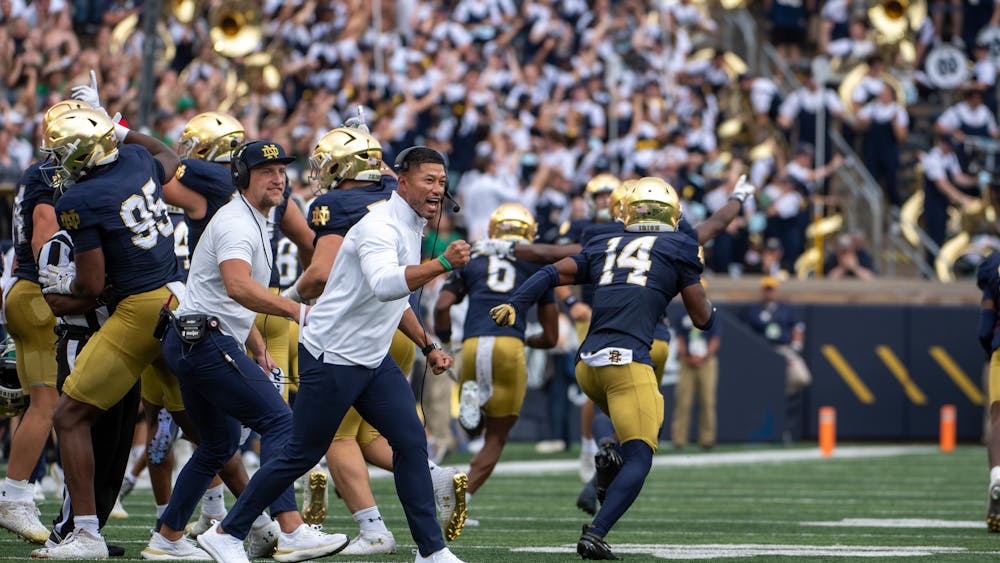Election season is well underway here in the tri-campus, and next week the students of Saint Mary’s College will elect their next Student Government Association (SGA) president and vice president. Building a platform, campaigning and serving the student body takes a lot of time, energy and dedication. To better understand the process, The Observer spoke with current SGA president Eleanor Hanson and vice president Adriana Salgado, as well as H. Shay Jolly Schneider (’05), Associate Dean of Students.
Schneider detailed the timeline of elections in an email to The Observer. Throughout the month of February, potential candidates were able to weigh their options and had to attend an information session to review all the necessary campaign and election procedures. Students form tickets of two candidates — one for president and the other for vice president — and run as a pair. Tickets were locked in March 4, the deadline by which candidates must have submitted their campaigning materials for review and approval from the Associate Dean of Students and the Office of Student Involvement and Advocacy. The campaign period will begin Monday, March 14, and draw to a close at 11:59 p.m. Wednesday, March 16.
The SGA election process is a whirlwind. In the short window of Monday to Wednesday, tickets must show the student body how and why they wish to represent and serve their peers for the coming year. Hanson and Salgado, both seniors majoring in communications, had an experience marked by a lineup of interviews and meetings to demonstrate their qualifications to their fellow students.
“Adriana and I had to have all of our campaign materials approved before we started campaigning. Once we campaigned, we met with other boards, and they decided whether or not to endorse us, which isn't going to be happening this year. And then we filmed a speech, and then it was over in two days,” Hanson said.
“It was very overwhelming and kind of stressful, but I mean, it was well worth it,” Salgado added. “It's overwhelming in the moment, and I know we weren't the only people that felt that way. It's not going to be a stress-free thing for anybody.”
These leadership positions are extremely demanding of the students that hold them, but having these institutions on campus is part of a larger learning experience that enhances student life, Schneider said.
“Helping our students recognize [that] participating in the democratic process is important — to make sure there is an understanding that there is importance in sharing your voice and actively participating in decision making,” Schneider said via email.
In recent years, there have been two significant modifications to campaigning regulations. The first, as Hanson said, is that candidates filmed their speeches to the student body.
“We have our candidates pre-record a 5-minute speech that goes up online and remains up through the election — so more people have the ability to watch on their own time, rather than having to find time to make it to an event or be in the Dining Hall at the exact time speeches are being given,” Schneider said via email.
The second change is that Saint Mary’s clubs and organizations may not issue formal endorsements, a change from the previous election cycle, in which Hanson and Salgado interviewed with a variety of organizations to earn endorsements.
When the campaigning period is complete, the students of Saint Mary’s College will decide who will represent them as president and vice president of SGA. Schneider said that candidates usually have prior experience in student leadership positions or SGA. She also added that the candidates must be willing to take on the time commitment, as just running for office “takes a lot of organization, balance and self-care to be ready to take on such a time-intensive and important position.”
Beyond prior experience, there are intangible qualities that can set candidates apart. Through their tenure thus far, Hanson and Salgado have learned a lot about what their student body needs from its leaders, reflecting on how communication and transparency play an important role in their work.
“I think it's very important to be able to sit down with a student and be able to hear their concerns and be able to say, I can see where you're coming from, I completely understand, let me see what I can do about it,” Salgado said. “I think anybody who knows they're approachable and can have a conversation with somebody and be able to be supportive and be a friend — that's really ideal for this position.”
As president and vice president, Hanson and Salgado meet with administrators and other campus leaders. Hanson also emphasized the necessity for student leaders that take care to listen to their peers, adding how important it is to use their voices in these meetings, as well.
“We listen to everything that the students have to say to us, and when we meet with the Board of Trustees, we have explained to them what the students need,” Hanson said. “We've raised their awareness with what is going on on campus, what needs to be fixed, what needs to be addressed.”
Read More
Trending









